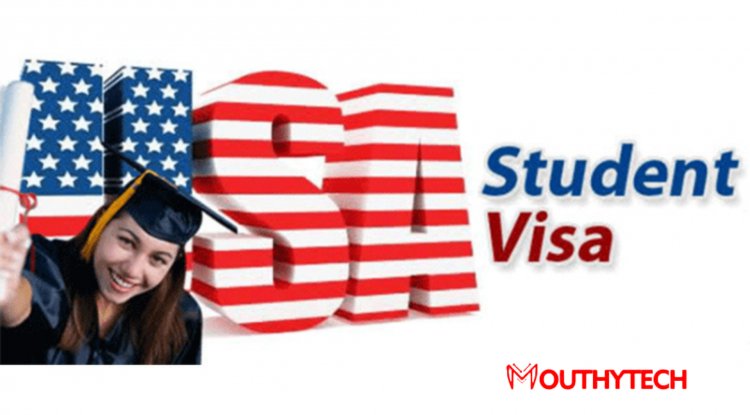How to apply for a Student Visa In Australia and other visa options
If you’re based in another country, chances are you want to study somewhere else. Or maybe you’re from a country that doesn’t usually offer anyone the opportunity to study abroad. Either way, this means getting a student visa is going to be important for you. With so many countries around the world offering study abroad programs for eligible students and graduates, it’s not difficult to understand why there are so many different types of student visas available. Let’s take a look at some of the major factors that will help you decide which type of student visa is right for you and your future plans in Australia.
Are you an international student planning to study abroad for a year or more? Or are you an international employee working in Australia? Either way, the good news is that you can secure a Student Visa to study in Australia. Visa requirements vary depending on your country of residence; however, the most common types of student visas include a Study VISA (for high school and undergraduate students), a Postgraduate VISA (for postgraduate students or those who have completed their degree), and a Specialist VISA (for researchers). To find out if you qualify and how long it will take to process your application, keep reading.
What is a student visa?
A student visa allows you to study in Australia and any country in the world on a temporary basis. Depending on your country of residence, a student visa can last between 1 and 2 years or more. For most international students, the goal is to eventually apply for a permanent residence visa. To do this, you have to complete a degree or postgraduate qualification and demonstrate good levels of English language proficiency.
Study Visa (Subclass under 52)
If you’re an Australian citizen or permanent resident who is enrolling full-time in undergraduate studies (or in a postgraduate course that leads to a similar qualification), you may be able to apply for a Student Visa (Subclass under 52) that allows you to stay in Australia for 12 months. The same applies to New Zealand citizens studying in Australia on a Student Visa (Subclass under 52). To qualify for this Student Visa, you’ll need to provide evidence of your enrolment, an enrolment form signed by your university, and a transcript of marks. You’ll also need to apply for a Student Visa subclass under 52 online and pay a $330 (per person, per year) application fee.
Postgraduate or Research Student Visa (Subclass under 110)
If you’re returning to Australia after completing your undergraduate studies, or if you’re a postgraduate student who intends to conduct research in Australia, you may be able to apply for a Postgraduate or Research Student Visa (Subclass under 110). Like Subclass under 52, this visa has no set duration and allows you to stay in Australia for up to 4 years. You can also apply for a Postgraduate or Research Student Visa if you’re a New Zealand citizen, or if you’re a citizen of a country that does not require you to have a temporary work visa prior to taking up a course of study.
Student Visa (Subclass under 116)
A Student Visa (Subclass under 116) is a popular choice for international students who have finished their studies and want to continue working and/or studying in Australia. This is because a Student Visa (Subclass under 116) allows you to apply for a new Australian visa after 12 months and stay in Australia indefinitely. A Student Visa (Subclass under 116) allows you to work and study in Australia as long as you study a recognized course and provide evidence of enrolment. You can also apply for a Student Visa (Subclass under 116) as a New Zealand citizen if you want to continue working and/or studying in Australia after completing your undergraduate degree.
Switching your current visa to a new one
If you want to switch from a Student Visa (Subclass under 52, 110, or 116) to a Permanent Resident or Resident Visa (known as a “switch” as these visas are “switchable”), you can do so. To switch from a Student Visa (Subclass under 52, 110, or 116) to a Resident or Permanent Resident Visa, you need to apply online (as you would for a new visa) and pay the usual application fee. However, you’ll only be able to switch to a new visa if your current visa is still valid. If it’s expired or you’ve overstayed your visa, you’ll be required to leave Australia and apply again.
Visa requirements for students
Here is a list of all the requirements for submitting an application for an international student visa.
1. An offer letter
Your preferred school provider will issue you a Letter of Offer if your application is accepted.
Before you accept the Letter of Offer, thoroughly read it. It will contain information on your course, enrollment requirements, and fees you must pay if you accept the offer.
The agreement will be used to determine whether you will receive a refund if you don't start or finish your course, so make sure you are aware of all your rights, including the refund policies.
If you are not pleased with any of the provisions of the Letter of Offer, do not accept it.
Copy of the Letter of Offer should be kept. This copy will be necessary for you to understand your rights and in case you need to file a complaint against the institution.
2. Enrolment Confirmation (CoE)
Your education provider will provide a Confirmation of Enrolment (CoE), a document that attests to your enrollment in a particular course. Once you've accepted your offer and made your deposit, the CoE will be delivered to you.
So that the Australian Government has evidence that you are enrolled in your declared course, a copy of this document must be submitted with your visa application.
3. Documentation of English proficiency
Because Australian educational programs are taught in English, you will need to provide proof of results from an approved English language exam if you do not speak English as your first language. You can use this certificate to show the Australian government that you have the minimal English proficiency requirements for your particular course.
The Australian Government will only accept a limited number of tests, yet they are all easily accessible from anywhere around the globe.
Each educational level has different minimum requirements, and schools occasionally raise these standards for particular courses.
For more information, visit the Australian Department of Home Affairs website understudying and training visas, and look at the website of the educational institution to see whether there are any English language requirements.
4. Genuine Temporary Entrant (GTE) Requirement.
To meet the Genuine Temporary Entrant (GTE) requirement, you must write a statement that addresses two criteria:
1) That you are genuinely coming to Australia to study and not for any other reason.
2) That you will only be residing in Australia temporarily (and not overstaying your visa).
In your statement, include details on your ties to home (such as your friends and family, or a job that you have to return to) as well as the value of the course to your future career or academic goals.
Including these details, it will prove both your intention to return home at the end of your visa and your true intention to study in Australia.
5. Proof of Sufficient Funds.
To receive an Australian student visa, you must prove that you have enough money to support yourself throughout your stay. There are two options for meeting this requirement:
Provide bank statements, and evidence of grants or scholarships. This will prove that you have enough money to cover all your costs and expenses through your course, such as travel, course fees, and rent.
Supply proof of your parent's or partner’s annual income, which must be AUD$62,222 in the year immediately before you apply. If you bring family members, the annual income must be at least AUD$72,592.
How long to process a student visa?
The wait time for a Student Visa (Subclass under 52, 110, or 116) is usually between 8 and 12 months. If you apply for a Student Visa (Subclass under 116) and you’re a New Zealand citizen, the wait time is usually between 8 and 12 months.
How much is student visa in Australia?
$630
Student visa application fees
The student visa application fee (Subclass 500) is $630 for a primary applicant from the 1st of July 2021. Some other fees may occur: For an additional applicant who is 18 years and is included within the same student visa application, there is an additional applicant charge of $470.
What do you need to apply for a student visa?
- A completed application form for your chosen visa. You can find the form on the Australian Government’s website.
- Two passport-sized photos (with white background). You can find more details on the Australian Government’s website.
- Evidence of your enrolment. This can be a notice of enrolment letter from your university, a letter from your employer, or your study transcript.
Understanding the Student Visa (Subclass 500)
The Student visa (subclass 500) visa allows you to live, work and study in Australia for a maximum of five years, in line with your course.
On this visa, you are normally allowed to work a maximum of 40 hours per fortnight during term time and unlimited hours during study breaks. However, the Australian Government is temporarily allowing students to work over their normal limit of 40 hours per fortnight during term time across all sectors. Currently, students may also start working on arrival in Australia, and do not need to wait until their course commences.
Studying in Australia: the benefits of a VISA
- You can study in Australia on a Student Visa (Subclass under 116) for up to 4 years.
- You can study full-time or part-time. If you’re planning to work during your studies, you can work part-time while studying.
- You can apply for a Social Security Number (SSN) after you arrive in Australia. This allows you to receive government benefits, make tax payments and apply for jobs.
- You can apply for Australian citizenship after 5 years of continuous full-time (or 8 years of part-time) residence.
The cons of a Student Visa
- It’s complex and difficult to apply for a Student Visa (Subclass under 116)
- It may take longer than 12 months to process a Student Visa (Subclass under 116)
- You may not be able to stay in Australia for more than 2 years before switching to a Resident or Permanent Resident Visa
- You may be required to pay a $1,000 (per person, per year) application fee
- If you overstay your Student Visa (Subclass under 116), you may be fined, have your visa canceled, and be required to leave the country
Final Words
If you’re interested in studying in Australia and meeting new people, traveling the world, and experiencing first-hand the diverse cultures of a multicultural nation, the benefits of a Student Visa (Subclass under 116) are hard to beat. However, you should be prepared to wait and apply for a Student Visa (Subclass under 116) only after completing your undergraduate degree and passing any necessary language exams.
What's Your Reaction?













